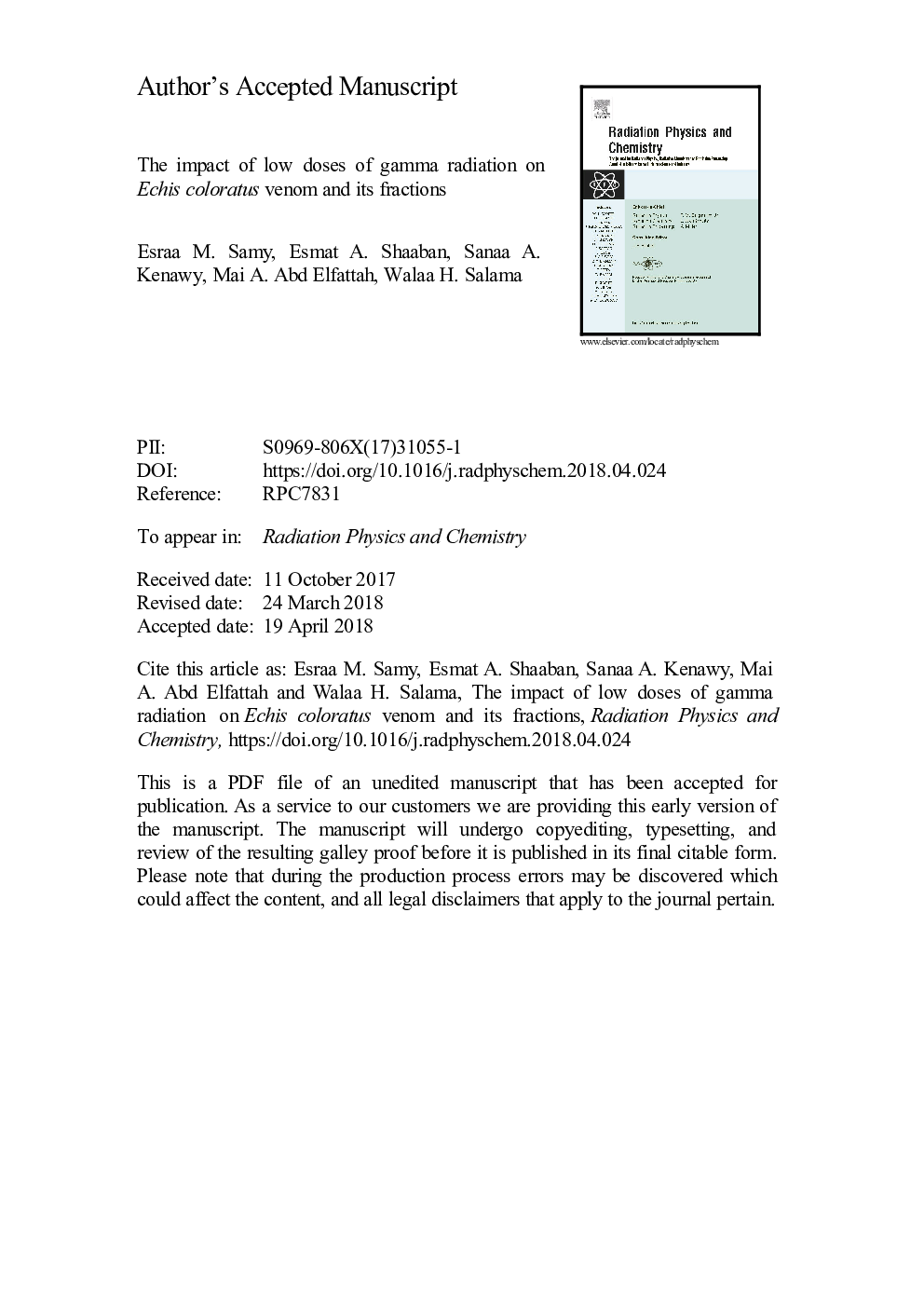| Article ID | Journal | Published Year | Pages | File Type |
|---|---|---|---|---|
| 8251322 | Radiation Physics and Chemistry | 2018 | 30 Pages |
Abstract
Echis coloratus viper (painted saw-scaled viper) is considered as one of the most venomous snakes in Egypt, its bite may cause severe health complications as coagulopathy, nephropathy, cardiopathy, necrosis and death. Ionizing radiation is one of the methods used to reduce the venom toxicity. The present study aims to study the effect of low doses of gamma radiation on Echis coloratus venom and its fractions. Two proteases (FNI, FNII and FRI, FRII) were partially purified on sephadex G-75 gel filtration chromatography of native and 3â¯kGy gamma irradiated venoms, respectively. The specific activities of proteases of FRI and FRII fractions were decreased from 20â¯Â±â¯0.46 to 8â¯Â±â¯0.64â¯U/mg and from 10â¯Â±â¯0.29 to 5â¯Â±â¯0.23U/mg, respectively, similarly, the PLA2 specific activities of FRII and FRIII fractions were decreased from 10â¯Â±â¯0.23 to 3.5â¯Â±â¯0.29U/mg and from 12â¯Â±â¯0.35 to 5â¯Â±â¯0.52U/mg, respectively, compared with the corresponding fractions of native one. In addition, the edema activities induced by 3â¯kGy irradiated whole venom and its isolated fractions were reduced compared to native venom and its corresponding isolated fractions. Further, the coagulant activity of venom and the isolated fractions were significantly reduced after exposure of venom to 3â¯kGy gamma radiation showing anticoagulant activities except FNI and FRI fractions. However, similar antigenic determinants of 3â¯kGy irradiated venom and its isolated fractions were detected by double immunodiffusion using horse polyvalent antivenin. Therefore, these findings indicate that low doses of gamma irradiation may offer an effective method for preparing an effective antivenin using either the whole or purified components of venom with minimal toxic effects caused to the hyper-immunized animals.
Related Topics
Physical Sciences and Engineering
Physics and Astronomy
Radiation
Authors
Esraa M. Samy, Esmat A. Shaaban, Sanaa A. Kenawy, Mai A. Abd Elfattah, Walaa H. Salama,
